To represent images in curved mirrors, it is essential to draw at least two of the three main rays coming from the end of the object. Then, it is necessary to connect perpendicularly the point of meeting of the reflected rays with the principal axis to form the image.
Here is a summary table of the characteristics of the images formed in the curved mirrors.
|
Characteristics of Images in a Concave (Converging) Mirror |
||||
|---|---|---|---|---|
|
Object position |
Nature |
Direction |
Size |
Position |
|
To infinity |
Real |
Inverted |
Point-sized |
At |F| |
|
Before |C| |
Real |
Inverted |
Smaller than object |
Between |F| and |C| |
|
At |C| |
Real |
Inverted |
Same as object’s size |
At |C| |
|
Between |C| and |F| |
Real |
Inverted |
Larger than object |
Before |C| |
|
At |F| |
No image |
|||
|
Between |F| and |S| |
Virtual |
Upright |
Larger than object |
Behind the mirror |
|
|
Characteristics of Images in a Convex (Diverging) Mirror |
|||
|---|---|---|---|---|
|
Object position |
Nature |
Direction |
Size |
Position |
|
In any position |
Virtual |
Upright |
Smaller than object |
Between |F| and |V| |
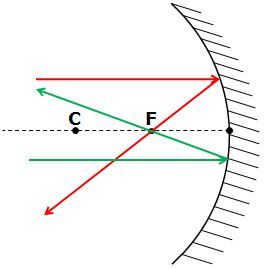
Since the object is very far away, only the parallel rays will be considered. The image created is point-sized (the size of a dot) located at the focal point of the mirror, and real in nature.
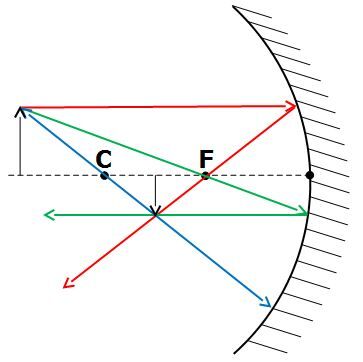
The characteristics of the image formed are as follows: the image is smaller than the object, real (since it is located on the same side as the object), inverted (since it is not in the same direction as the object), and it is located between the focal length and the centre of curvature.
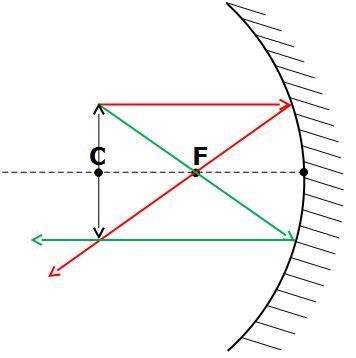
The characteristics of the image formed are as follows: the image is the same size as the object, real (as it is located on the same side as the object), inverted (as it is not in the same direction as the object), and it is located at the centre of curvature.
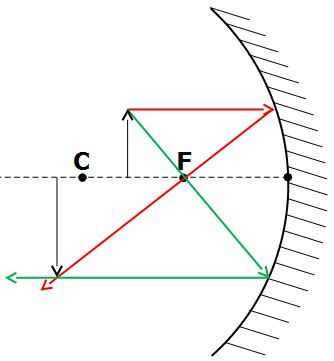
The characteristics of the image created are as follows: the image is larger than the object, real (since it is located on the same side as the object), inverted (since it is not in the same direction as the object), and it is located in front of the centre of curvature.
The third principal ray, the one passing through the radius of curvature, was not drawn because it did not touch the mirror. However, depending on the curvature of the mirror, it can still be used to find the image.
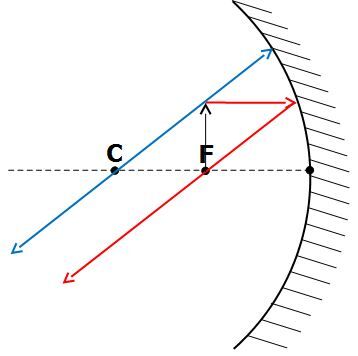
We cannot create an image in this situation, because the reflected rays cannot intersect since they are parallel.

The characteristics of the resulting image are as follows: the image is larger than the object, virtual (since it is located on the opposite side, relative to the object), upright (since it is in the same direction as the object), and it is located behind the mirror. The image is located further from the mirror than the object.
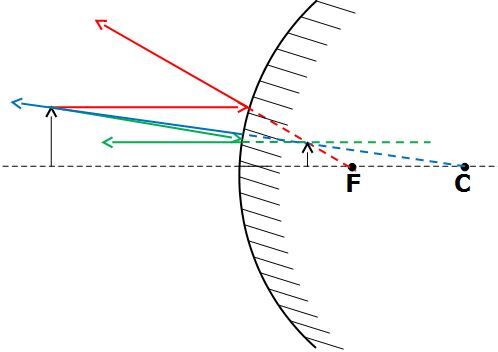
Regardless of where the object is located in front of the convex mirror, the image characteristics will always be the same. The image will always be virtual, upright, smaller than the object, and will be located between the focal length and the vertex, both located behind the mirror. The image will be closer to the mirror than the object.